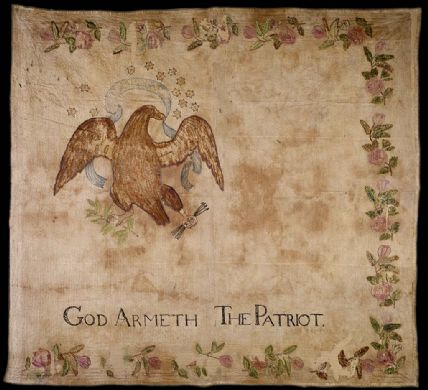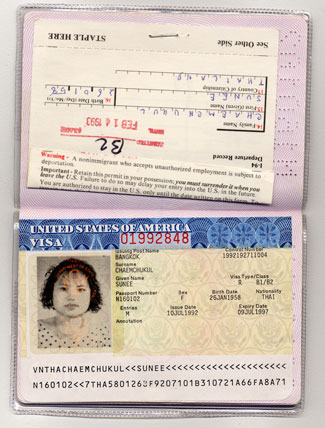As COVID-19 deaths spiked in 2020, Suzanne Firstenberg’s public art installation "In America: How could this happen…"
Museum Artifacts

Grade Range:
5-12
Resource Type(s):
Artifacts, Primary Sources
Date Posted:
12/31/2010
Violin purchased by Solomon Conn in Nashville, Tennessee, on May 1, 1863. Conn carried the violin while serving with Company B, 87th Indiana Volunteers during the Civil War. Written on the back of the instrument are the names of places where the soldiers of the 87th were either on duty or engagin

Grade Range:
5-12
Resource Type(s):
Artifacts, Primary Sources
Date Posted:
12/9/2010
Enlistment paper of John Edwards in His Majesty's Provincial Service, 1760.

Grade Range:
5-12
Resource Type(s):
Artifacts, Primary Sources
Date Posted:
12/15/2010
On October 28, 1774, the Rhode Island General Assembly chartered the Newport Light Infantry as a voluntary association of local citizens. These citizens wanted to form a company to obtain better military training than the colonial militia provided. The infantry, 100 strong, demonstrated its patri

Grade Range:
5-12
Resource Type(s):
Artifacts, Primary Sources
Date Posted:
12/21/2010
Sam Houston emerged as a prominent player in the affairs of Texas. Houston was elected commander in chief of the armies of Texas and took control of the Texas forces after the fall of the Alamo. On April 21, 1836, his force defeated Santa Anna and secured Texas independence. Houston was elected t

Grade Range:
5-12
Resource Type(s):
Artifacts, Primary Sources
Date Posted:
12/22/2010
The Creek War began on August 30, 1813, when a faction of Creek known as the Red Sticks attacked a contingent of 553 American settlers at Lake Tensaw, Alabama, north of Mobile. The British were believed to be a main ally of the Indians. In response to the Alabama attack, Jackson led 5,000 militia

Grade Range:
5-12
Resource Type(s):
Artifacts, Primary Sources
Date Posted:
12/15/2010
The halberd was a versatile pole arm developed as an infantry weapon in the 13th century. It has an ax-like blade and a steel spike mounted on the end of a long shaft. By the time of the Seven Years War it was carried by sergeants as a symbol of rank and authority.

Grade Range:
5-12
Resource Type(s):
Artifacts, Primary Sources
Date Posted:
12/30/2010
On February 16, 1862, General Buckner surrendered Fort Donelson. The unconditional surrender created jubilation throughout the North and shock in Dixie. It was the North’s first major victory of the Civil War, opening the way into the very heart of the Confederacy.

Grade Range:
6-12
Resource Type(s):
Artifacts, Primary Sources
Date Posted:
10/27/2008
This is an anatomical model of a woman, complete with removable parts. The kit includes a clear plastic body or shell, a "complete" skeleton, "all vital organs," and a round plastic display stand. The kit was designed as an educational tool to teach basic anatomy. The intructions explain how to a

Grade Range:
6-12
Resource Type(s):
Artifacts, Primary Sources
Date Posted:
9/3/2020
The American Party, also called the Know-Nothings, was a major national political force in the 1850s. It saw immigrants and Catholics as the greatest threat to self-government and to the nation. Arguing for rule by native-born Protestants, the Know-Nothings ran former President Millard Fillmore as t

Grade Range:
6-12
Resource Type(s):
Artifacts, Primary Sources
Date Posted:
3/5/2009
This Thai passport was seized in the well-publicized 1995 El Monte, Calif., sweatshop raid. The passport is part of a larger Smithsonian collection of artifacts documenting apparel industry sweatshops, focusing on the El Monte operation (72 workers were discovered working as slaves). With a legit



















